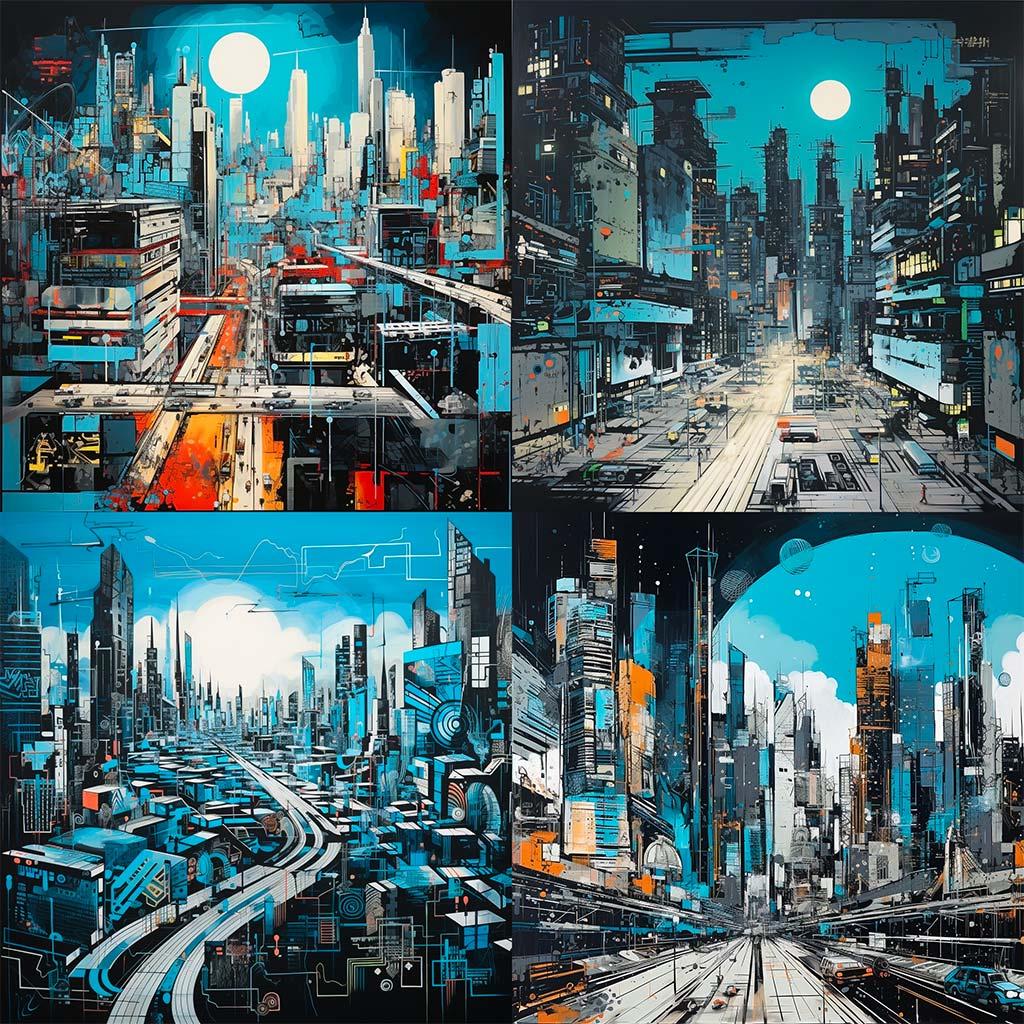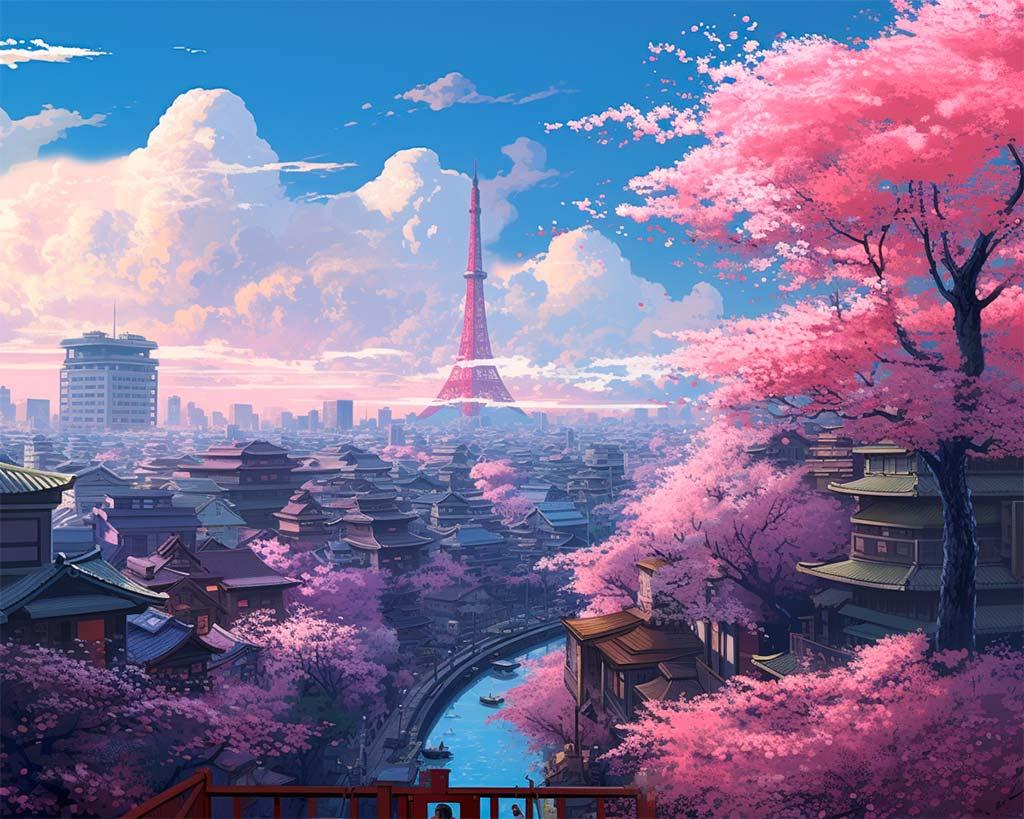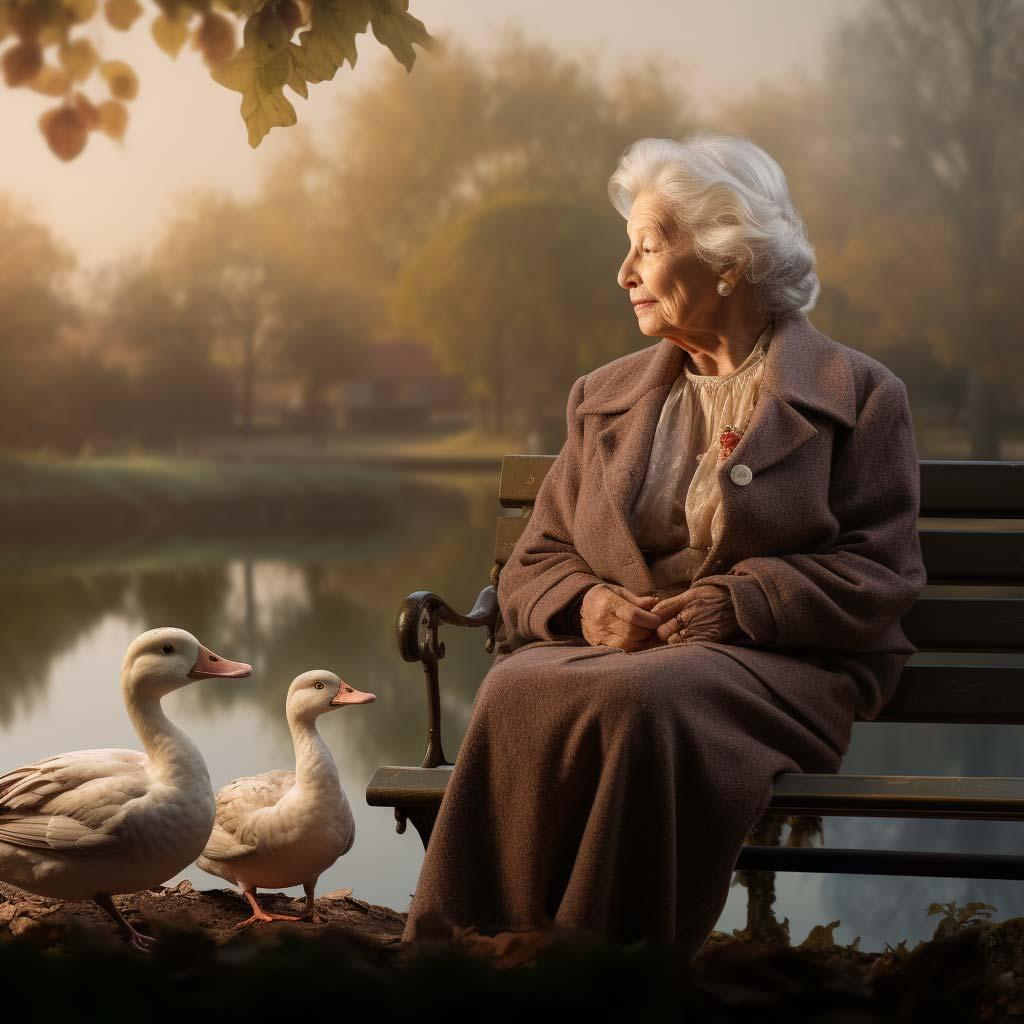

Exploring AI Art with Midjourney: A Handy Cheat Sheet
Welcome to the world of AI-generated art, where creativity meets technology, and ideas transform into visual spectacles – without Photoshop, Illustrator, etc., ever being opened! Alongside DALL-E, Midjourney is perhaps the most well-known generative AI art platform – and it's undoubtedly seriously fun (addictively so!) and thought-provoking (scary!).
What is Midjourney?
The Midjourney harnesses the power of artificial intelligence to transform text prompts into visually striking images. It's akin to having a digital artist at your fingertips, ready to bring your creative visions to life and although you can use conversational English prompts, to get the best results there are some parameters and keywords you can use.
In this comprehensive guide, we will explore the various commands, parameters, and styles you can employ with the Midjourney Bot, providing you with the knowledge you need to unlock its full potential.
How to use Midjourney
Accessing the Midjourney bot is a little cumbersome. To begin, ensure you have an active account with Midjourney. Once that's sorted and you're logged in, navigate to the bot interface on the website — this usually launches a Discord chat room (Premium Users can add it to their own private Discord server). From there, you send commands directly into the chat interface. These commands, starting with a "/", will instruct the bot to perform a variety of tasks such as generating an image or answering a question.
Remember, the effectiveness of the bot is tied to the accuracy of your commands, so refer to this cheat sheet guide to make the most of the Midjourney bot's capabilities.
Command Overview
Here's a brief overview of the commands, some have optional parameters which we cover later:
- /imagine: Use this command to generate an image based on a given prompt.
- /ask: This is how you get an answer to your question.
- /blend: Use this command to seamlessly blend two images together.
- /daily_theme: Use this command to toggle notification pings for the #daily-theme channel update.
- /fast: Switch to Fast mode with this command.
- /help: A helpful command that gives basic information and tips about the Midjourney Bot.
- /info: Check your account information, queued jobs, or running jobs.
- /stealth: If you're a Pro Plan Subscriber, you can switch to Stealth Mode.
- /public: For Pro Plan Subscribers, this command switches to Public Mode.
- /subscribe: Generate a personal link for your account page.
- /settings: Adjust the Midjourney Bot's settings.
- /prefer option: Use this command to create or manage a custom option.
- /prefer option list: Check your current custom options.
- /prefer suffix: Specify a suffix to add to the end of every prompt.
- /show: Use this to regenerate images within Discord using the image's Job ID.
- /relax: Switch to Relax mode.
- /remix: Use this command to toggle Remix mode.
Parameters Deep Dive
Understanding the Midjourney Bot's parameters can give you unprecedented control over your image generation. Here are the essential parameters for /imagine prompts:
Basic Parameters
- --aspect or --ar: Adjust the aspect ratio of a generated image. For example, --ar 2:3 changes the ratio to 2:3; common ones below;
- --ar 1:1: This is the default aspect ratio, producing square images. It's frequently used in social media posts.
- --ar 5:4: This aspect ratio is commonly used in frame and print ratios, producing slightly wider images than they are tall.
- --ar 3:2: This ratio is common in print photography. The images will be wider than they are tall, which is ideal for landscapes or wide shots.
- --ar 7:4: This is close to the aspect ratio of HD TV screens and smartphone screens, resulting in wide, landscape-oriented images.
- --chaos: This command changes how varied the results will be. Higher values produce more unusual and unexpected generations.
- --no: This is a negative prompt. Use it to remove something from the image, such as plants.
- --quality or --q: Set the rendering quality time. Higher values offer higher quality but cost more.
- --seed: Use a specific seed number to generate the initial image grids. Using the same seed number and prompt will produce similar ending images.
- --stop: End a Job partway through the process. This command can create blurrier, less detailed results.
- --style: Switch between different versions of the Midjourney Model.
- --stylize or --s: Set how strongly Midjourney’s default aesthetic style is applied to jobs.
- --uplight: Use an alternative “light” upscaler for less detailed and smoother results.
- --upbeta: Use the beta upscaler for an upscaled image with significantly fewer added details.
Model Version Parameters
- --niji: This model is designed for anime-style images.
- --hd: This earlier model produces larger, less consistent images, suitable for abstract and landscape images.
- --test: Use the special Midjourney test model.
- --version or --v: Use an earlier version of the Midjourney algorithm
Upscaler Parameters
- --uplight: Use a lighter upscale for less detailed and smoother images.
- --upbeta: Use an alternative beta upscaler when selecting the U buttons. The upscaled image has significantly fewer added details.
- --upanime: Use an alternative upscaler trained to work with the --niji Midjourney Model.
Other Parameters
- --creative: Modify the test and testp models to be more varied and creative.
- --iw: Sets image prompt weight relative to text weight. The default value is --iw 0.25.
- --sameseed: Seed values create a single large random noise field applied across all images in the initial grid
Image Generation Cheatsheet
Here are some common styles of image generation and their characteristics, add these as keywords at the start of your prompt:
- 8k: Lighting tends to be more extreme; colours even more saturated and computer-generated looking than "high definition"
- cinematic: Shadows tend to be more extreme (though not darker); objects a bit thicker; more poster-like
- high definition: Shadows are lightened; more fanciful and saturated colours
- ultra photorealistic: Similar to "fine ultra-detailed realistic"
- Hasselblad H6D: Sharper focus on the subject; shadows are deepened
- fine ultra-detailed realistic: Can be a bit grainy and "ropey" but increases detail generation
- color grading: Extreme variations in hue; vibrant but not over-saturated colours
- depth of field: Sharp focus on subject, background and foreground blurred
- film lighting: Limited lighting sources; backlighting common; deep shadows cast by light sources
- rim lighting: Slightly stronger lighting effect than "film lighting," but very similar results
- intricate: Tends toward non-realistic "crafts" and "pattern" type designs.
- realism: Artistic realism. Backgrounds tend to be more uniform; the subject looks more like a painting; more objects with subject
- photography: The subject tends to have a little area of objects around it with little else in the background
- rendered for IMAX: A more complex subject with very directional lighting and subdued saturation
- tilt-shift: Like "depth of field," but from above or with a high angle
- motion-blur: Speed lines. May render as if the wind is blowing
- 35mm film: More vibrant colours, but muted saturation, detailed with additional foreground and/or background elements
Examples
I created some sample images and provided the prompt I used.
1.A futuristic cityscape
Midjourney does do a brilliant job of concept art, and that's maybe where it's best suited currently. I was hoping it would add some Latin vibes, but this might need further prompt crafting to embody correctly.
a futuristic city in south america, with skyscrapers and vast viewing arenas. image uses the colours black, silver and teal blue mainly. the cityscape is depicted in the style of Jean-Michel Basquiat
2. A stylish, cartoon-style Tokyo
Looks like something straight out of a Studio Ghibli title doesn't it? This is no doubt due to the volume of images made in the style that Midjourney could learn from.
the city of tokyo in blossom season in the style of Hayao Miyazaki --ar 5:4
3. A lady by the duck pond
an ultra photorealistic image of an older lady sat on a park bench looking at two ducks on the water of a nearby pond. the park is quiet and sereneThis is a good example of why it takes some patience and consideration to generate the right kind of image, it would appear that although my prompt is specific, some of the instruction given has not quite been followed.

What can't Midjourney do?
Now Midjourney is still in its infancy, and its by no means perfect – it cannot generate high-resolution images, or vectors, or text, but it's still an exciting vision of what lies ahead.
AI is now at the core of the business landscape
If developments in the world of AI have sparked your interest, we invite you to reach out to us – there are countless new services and uses arising from these next-generation services and some of them are going to massively disrupt the way most sectors operate.
At Bonbon, we're passionate about the intersection of creativity and technology and we'd love to explore the possibilities it can open up for your business. Whether you're looking to understand the advantages of AI, unsure if you are being left behind – or are seeking ways to leverage its capabilities for fields such as process, customer service recruitment or marketing – we're here to guide and assist.
Get in touch and let's start the conversation about how AI can help shape the future of your business.
P.S Yes, the Hero image for this article I created with Midjourney!
